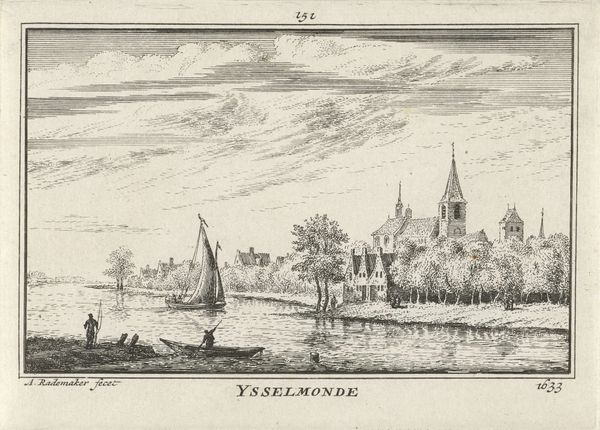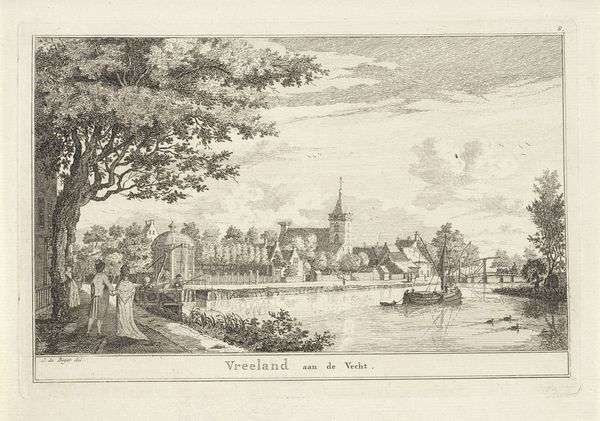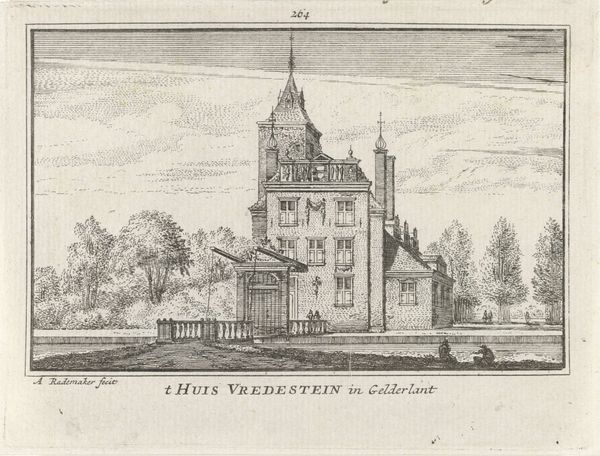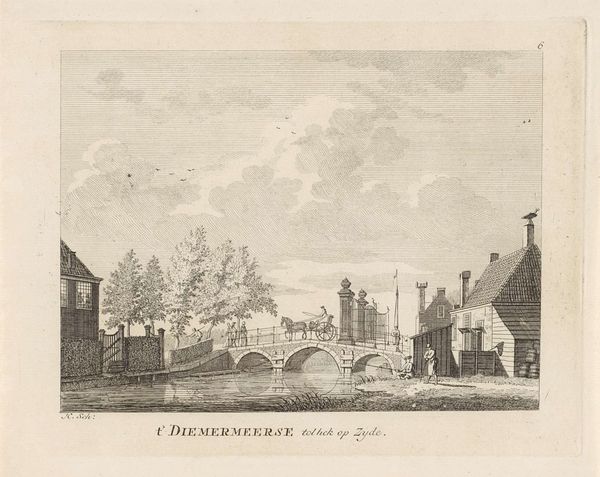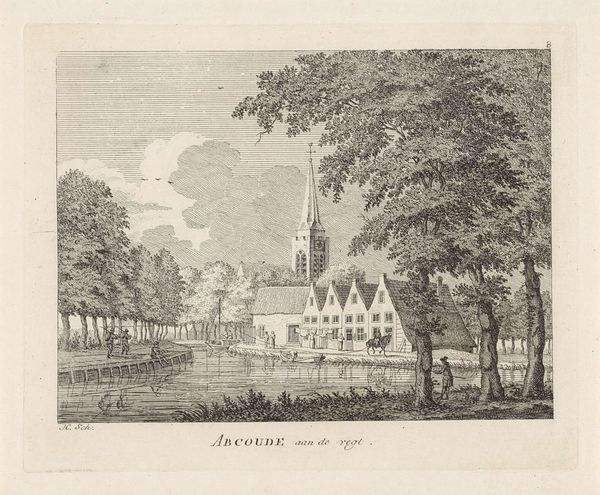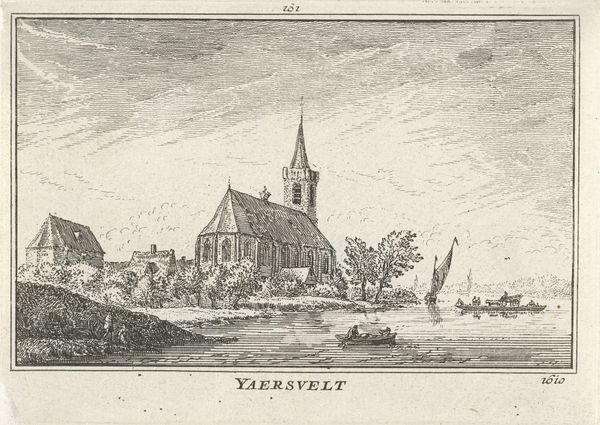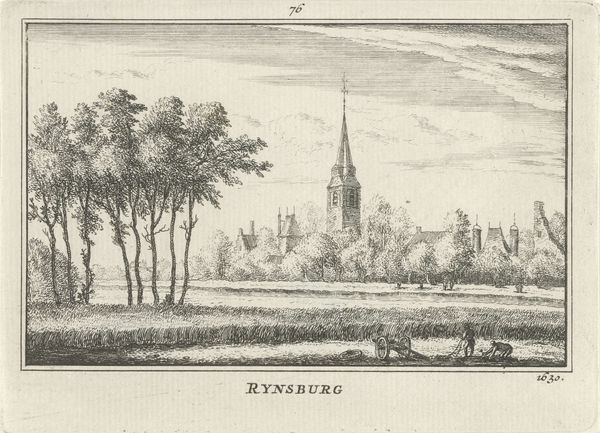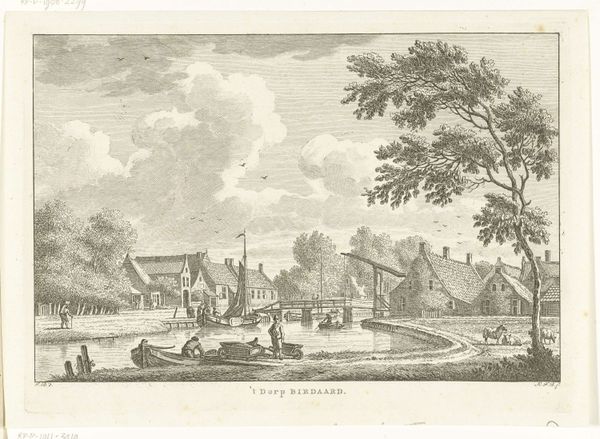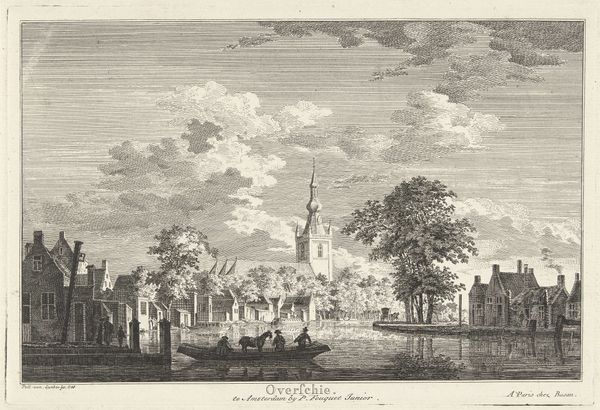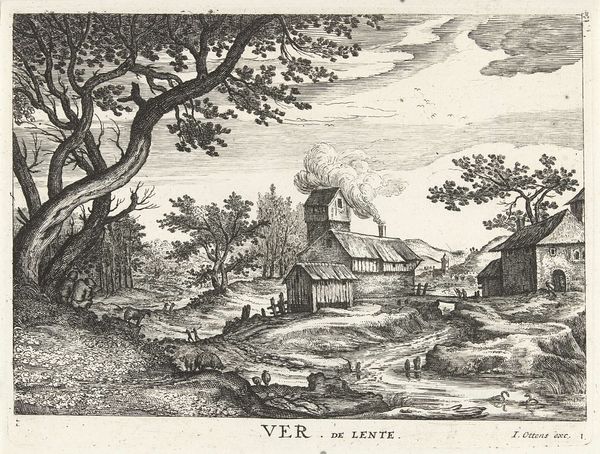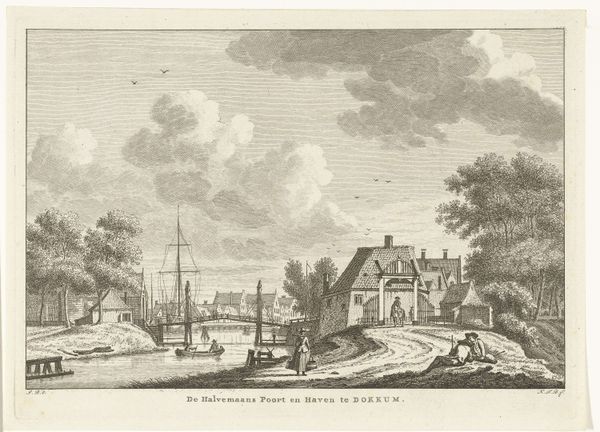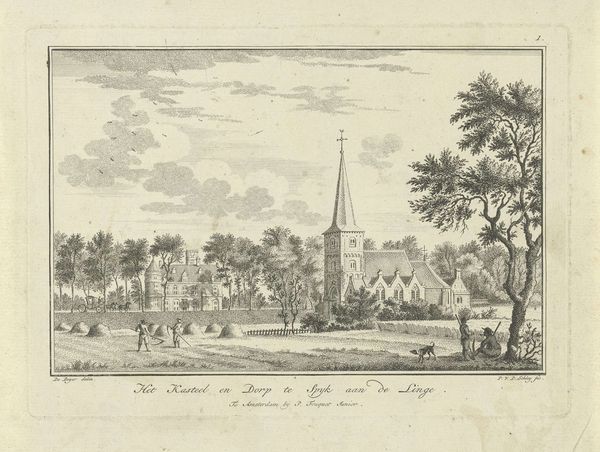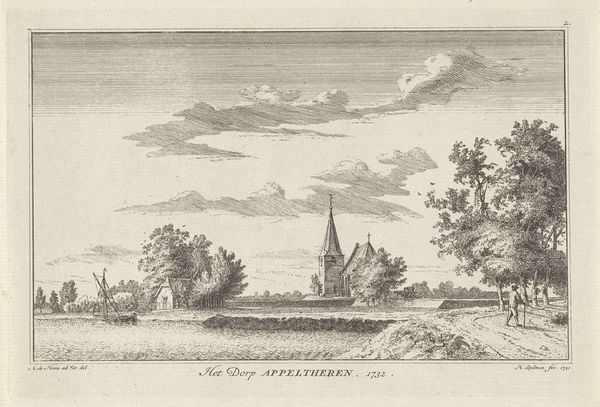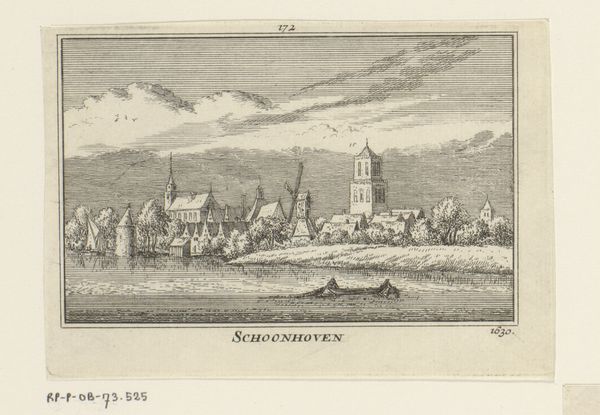
Dimensions: height 81 mm, width 112 mm
Copyright: Rijks Museum: Open Domain
Editor: Here we have Abraham Rademaker's "Gezicht op Valkenburg, 1610," an etching and engraving from the 18th century that captures a distant view of Valkenburg. The delicate lines create a really serene and pastoral feel. How do you interpret this work within the context of its time? Curator: Well, that serene, pastoral feel is precisely what Rademaker, and indeed the Dutch Golden Age, was trying to project, or rather, sell. The etching wasn't created in 1610, you mentioned it was from the 1700s. The printing press allowed for a wide distribution of imagery, creating and cementing cultural narratives. How does this "view" reinforce ideas of Dutch prosperity? Editor: Hmm, I hadn't thought about it like that. So, you’re saying this idyllic scene is more of a carefully constructed image than a pure representation of reality? It’s interesting that the landscape becomes a signifier of economic and political success. Curator: Exactly! These cityscapes often omit the less flattering aspects of urban life. It invites the viewer to take pride in the advancement of Dutch society and subtly legitimizes the ruling class by highlighting their achievements. The view is carefully crafted, note the receding perspective and orderly arrangement; consider the political power in dictating the perspective of viewing, which in itself conveys ownership. Can you see any other symbols here that speak to Dutch societal values? Editor: I guess the people walking on the path, the grazing cattle, the church... they all suggest order, industry, and piety – key virtues of the time. The engraving isn't just documenting a place, but reinforcing certain social and moral principles, something like an idealized Dutch society, am I following? Curator: You are absolutely right. And it's important to remember that art during this period played a vital role in shaping public opinion and solidifying national identity. So this image functions more like an early form of propaganda than a simple landscape view. Editor: That’s a really helpful perspective. I definitely see this work in a different light now, understanding it as more than just a pretty picture, but a statement about Dutch society and its values. Curator: Precisely. History gives context.
Comments
No comments
Be the first to comment and join the conversation on the ultimate creative platform.
